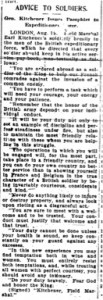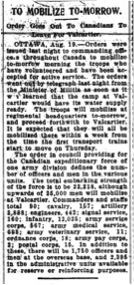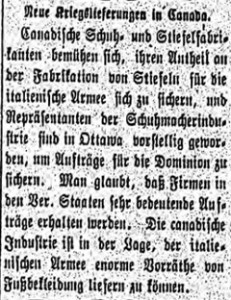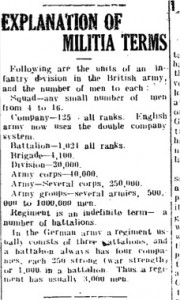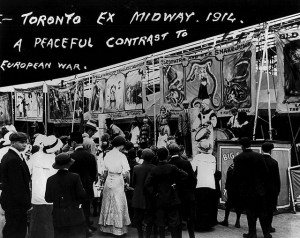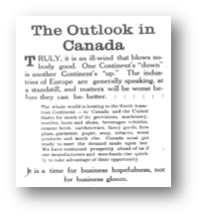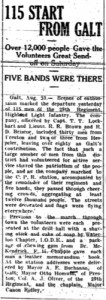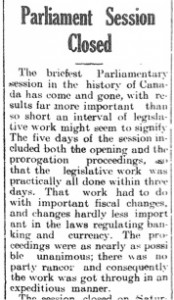Parliament convened on 18 August to discuss the war and the type of aid that Canada would provide to Great Britain. This was Canada’s first war session in over a century. The parliament was devoid of politics, unified by their desire to help Great Britain. It was hoped that this truce would be maintained during the entire session so that deliberations would be quick.
Both Sir Wilfrid Laurier, leader of the opposition, and Prime Minister Borden addressed the topic of German-Canadians during this parliamentary session. The two leaders stated that German-Canadian citizens were “certainly amongst our best citizens” and that they had proven their loyalty to Canada and the British Empire. The Waterloo Chronicle-Telegraph and the Elmira Signet reprinted Laurier’s Speech, while the Waterloo Chronicle-Telegraph included a section of Borden’s speech as well. The two newspapers did not reprint the two leaders’ entire speeches, but instead only printed the sections referring to German Canadians. This demonstrates how important these statements about German-Canadians’ loyalty to Canada were for all the citizens in Waterloo Region.
(“Parliament and the War,” Waterloo Chronicle Telegraph, 20 August 1914; “Canadian Parliament Opened,” Elmira Signet, 20 August 1914; “Sir Wilfrid Laurier in the House of Commons,” Elmira Signet, 27 August 1914; “Tributes Paid to German Canadians,” Waterloo Chronicle-Telegraph, 27 August 1914; Sir R.L. Borden in Opening the Special Session of the Dominion Parliament,” Elmira Signet, 27 August 1914; R. Borden, “Canada at War” (speech, Ottawa, ON, 18 August 1914), Wartime Canada, http://www.wartimecanada.ca/sites/default/files/documents/CanadaAtWar.Aug_.1914.pdf)

